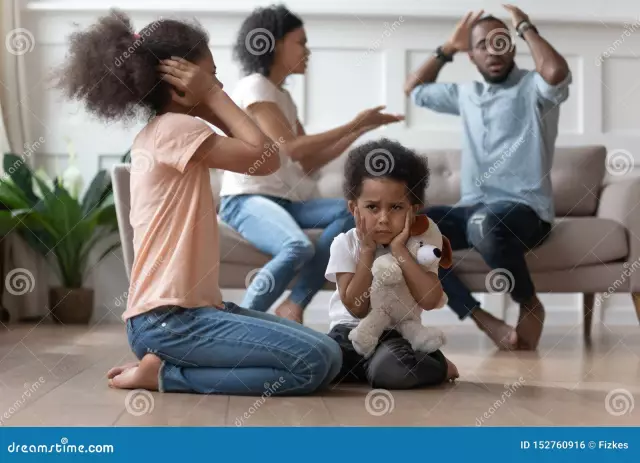- Author Curtis Blomfield [email protected].
- Public 2023-12-16 20:44.
- Last modified 2025-01-23 17:01.
Meningitis is a life-threatening disease that is more common in children than in adults. This happens due to the fact that the immune system of the child is not yet as prepared as in adults. He has yet to learn what microbes live in the area and learn how to deal with them.
Viruses, rarely bacteria or protozoa are the causes of serous meningitis. Signs in children of this disease are not always specific, and it is almost impossible to distinguish serous inflammation from purulent inflammation in the clinic. Only with the help of a general analysis of the cerebrospinal fluid, which can be obtained during a lumbar puncture (puncture in the lumbar vertebrae), is this diagnosis made.

Before serous meningitis itself develops, the symptoms in children will resemble a common viral disease. This is either a cough, or a runny nose, or a sore throat, less often - diarrhea, conjunctivitis, a small reddish rash all over the body if an enterovirus has entered the child's body. Then, only after 3-5 days, a meningitis clinic occurs (allthis time the microbe reached the meninges and overcame its protection).
Serous meningitis is not usually contagious. The patient can spread the virus or bacteria into the environment, but the likelihood that the microbe will cause meningitis in another person is quite small. Adults in contact with the patient will almost certainly develop conjunctivitis, acute respiratory infections, cough or diarrhea. Children can also get meningitis after such contact, but this is unlikely. Rather, if serous meningitis occurred in several children attending the same childcare facility, they shared food or drink contaminated with viruses.

Serous meningitis. Signs in children:
- The baby's body temperature rises. Usually these are high figures that appear as a “second wave” against the background of an already normalized temperature, or its primary increase.
- Severe headache: sore frontal part or temples, the child may indicate a pain that is widespread throughout the head.
- Lethargy, drowsiness.
- Lying is easier than sitting.
- Nausea, vomiting, usually without diarrhea, and after the child vomits, he does not get better. Vomits the child under pressure ("vomiting a fountain"). In this case, the masses have no diagnostic value in this case: they may contain an admixture of bile (yellow staining), greenery, pieces of undigested or overcooked food.
- Appetite disappears, the child is not active and does not even want to watch cartoons or play computer games.
- May experience dizziness, photophobia.
- Increases skin sensitivity.
- There may be seizures when the child not only involuntarily moves the limbs, but also stops responding to others.
- If you put your hand under the child's head and try to touch the sternum with your chin, then this is impossible (the symptom should be checked against the background of a low body temperature or in its absence).
Serous meningitis. Signs in children under one year old:
- Monotonous crying or screaming, maybe moaning or other monotonous sounds that are accompanied by a grimace of pain. All this is against the background of elevated body temperature.
- The child refuses to go to the hands, as he is more comfortable in the supine position.
- Lying down, he tries to take a specific position: on his side with his legs tucked in and his head thrown back. If this is observed in a child as a separate symptom against a background of normal temperature, this may indicate that there is an increase in intracranial pressure.
- A large fontanel bulges out (it should be on the same level with the bones of the skull and pulsate).
- The baby becomes lethargic, sleepy. At first, he may be unnaturally aroused, then this is replaced by a gradual falling asleep to the point that it becomes impossible to wake him up.
- Convulsions due to body temperature below 38 degrees, repeated convulsions.
- If you take the child under the armpits, he will pull his legs up to his chest and will resist
- vomiting "fountain".

such abuse by an adult, while a baby without meningitis wouldcalmly bend, unbend your legs, move them to the sides.
In both infants and older children, serous meningitis can occur with a rash.
Bacterial meningitis often has the same symptoms. It can be distinguished if it occurs against the background of otitis media, rhinitis, osteomyelitis, pneumonia or sinusitis, or if there is a dark-colored rash on the body that does not disappear and does not turn pale when pressed with glass. The main diagnosis is carried out by examining the cerebrospinal fluid.






